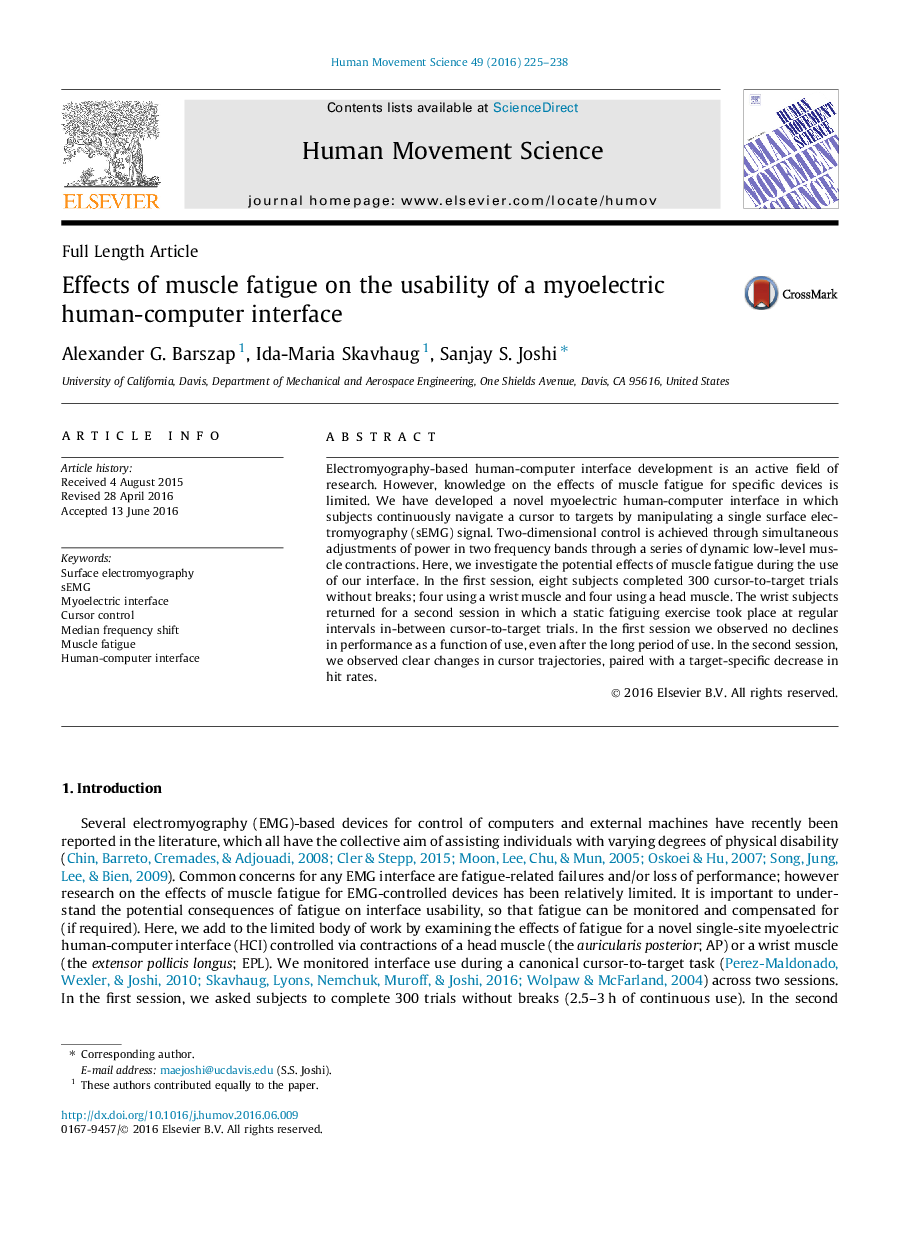| Article ID | Journal | Published Year | Pages | File Type |
|---|---|---|---|---|
| 7291293 | Human Movement Science | 2016 | 14 Pages |
Abstract
Electromyography-based human-computer interface development is an active field of research. However, knowledge on the effects of muscle fatigue for specific devices is limited. We have developed a novel myoelectric human-computer interface in which subjects continuously navigate a cursor to targets by manipulating a single surface electromyography (sEMG) signal. Two-dimensional control is achieved through simultaneous adjustments of power in two frequency bands through a series of dynamic low-level muscle contractions. Here, we investigate the potential effects of muscle fatigue during the use of our interface. In the first session, eight subjects completed 300 cursor-to-target trials without breaks; four using a wrist muscle and four using a head muscle. The wrist subjects returned for a second session in which a static fatiguing exercise took place at regular intervals in-between cursor-to-target trials. In the first session we observed no declines in performance as a function of use, even after the long period of use. In the second session, we observed clear changes in cursor trajectories, paired with a target-specific decrease in hit rates.
Related Topics
Life Sciences
Neuroscience
Cognitive Neuroscience
Authors
Alexander G. Barszap, Ida-Maria Skavhaug, Sanjay S. Joshi,
